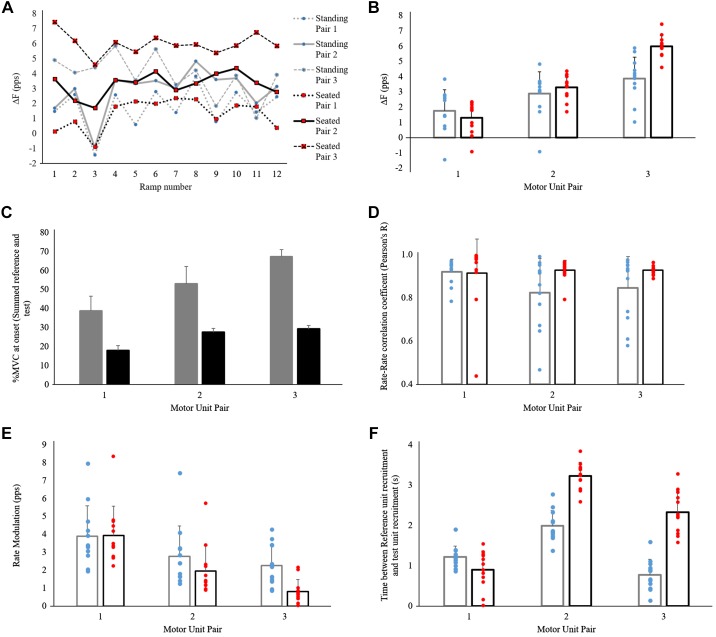Fig. 8.
Within-participant variations in paired motor unit estimates of persistent inward current (PIC) and validity measures. Data were obtained from a single participant who had multiple ramp force profiles (n = 12) with low error and clear, useable single-motor unit recordings. A: differences in reference unit firing frequency at test unit recruitment and derecruitment (ΔF) over time demonstrate consistently variable data [standing: pair 1 SD = 1.38 pulses/s (pps), pair 2 SD = 1.44 pps, pair 3, SD = 1.39 pps; seated: pair 1 SD = 1.03 pps; pair 2 SD = 0.78 pps; pair 3 SD = 0.71 pps] in both standing and seated measures as well as within a motor unit pair ramp-over-ramp. B: mean ΔF values grouped by posture show a clear trend of increasing ΔF with motor unit pair. Both standing (blue) and seated (red) postures show largely linear increases with motor unit pairs (1, 2, 3). C: correlation between ΔF and test unit recruitment threshold for both standing (r = 0.461, P = 0.005) and seated (r = 0.760, P < 0.001) data in this participant is consistent with previously reported positive correlations. D: rate-rate correlation coefficients remained relatively unchanged when effects of posture or motor unit pair were compared. E: rate modulation showed a trend of linear decrease with motor unit pair number in both standing and seated postures. F: finally, time between reference unit and test unit recruitment is shown to have large variations both by posture and by motor unit pair. Although a common analysis technique is to utilize the earliest recruited test unit to meet a minimum time between recruitment of >1 s, these data suggest that use of a later recruited test unit increases the average time between recruitment, ensuring greater PIC saturation of the reference unit.

